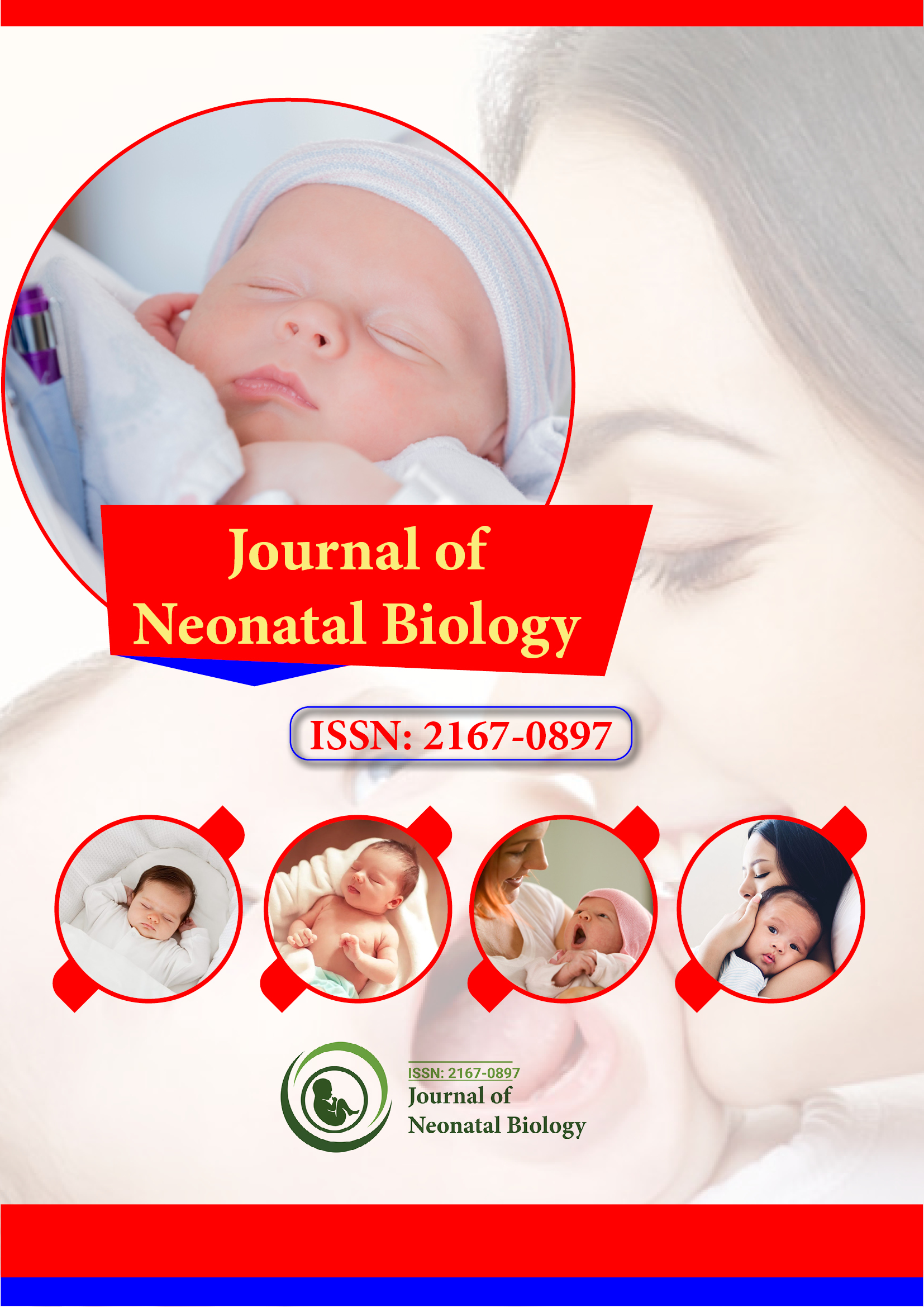Indexed In
- Genamics JournalSeek
- RefSeek
- Hamdard University
- EBSCO A-Z
- OCLC- WorldCat
- Publons
- Geneva Foundation for Medical Education and Research
- Euro Pub
- Google Scholar
Useful Links
Share This Page
Journal Flyer

Open Access Journals
- Agri and Aquaculture
- Biochemistry
- Bioinformatics & Systems Biology
- Business & Management
- Chemistry
- Clinical Sciences
- Engineering
- Food & Nutrition
- General Science
- Genetics & Molecular Biology
- Immunology & Microbiology
- Medical Sciences
- Neuroscience & Psychology
- Nursing & Health Care
- Pharmaceutical Sciences
Opinion Article - (2023) Volume 12, Issue 6
Premature Birth with Transient Tachypnea (TTN) and their Struggle to Breathe
Manfred Schwab*Received: 25-Oct-2023, Manuscript No. JNB-23-23660; Editor assigned: 27-Oct-2023, Pre QC No. JNB-23-23660(PQ); Reviewed: 13-Nov-2023, QC No. JNB-23-23660; Revised: 20-Nov-2023, Manuscript No. JNB-23-23660(R); Published: 28-Nov-2023, DOI: 10.35248/2167-0897.23.12.436
Description
Transient Tachypnea of the Newborn (TTN) is one such condition that parents and healthcare professionals might encounter. TTN, also known as "wet lung," is a relatively common respiratory problem that affects newborns. TTN is a respiratory condition that primarily affects newborns, typically within the first few hours after birth. The condition is characterized by rapid and labored breathing, which is known as tachypnea. Newborns with TTN often exhibit signs of respiratory distress due to the presence of excess fluid in the lungs.
During pregnancy, the fetus resides in the amniotic fluid, and the developing lungs secrete a specific type of fluid. In normal pregnancies, the baby's lungs start to clear this fluid before birth. However, in some cases, the clearance process may be delayed, leading to excess lung fluid remaining after delivery. Babies born via cesarean section are at a slightly higher risk of developing TTN, as they might not experience the same compression of the chest during the birth process as babies born through vaginal delivery. This compression helps expel excess lung fluid.
Premature infants are more susceptible to TTN because their lungs may not be fully developed. Their airways may also be narrower, making it harder for them to clear lung fluid effectively. Infants born to mothers with diabetes are at an increased risk of TTN. This is because the high blood sugar levels in the mother can affect the production and clearance of fetal lung fluid.
The sign of TTN is rapid breathing, with a rate higher than 60 breaths per minute. Infants with TTN may make grunting noises as they exhale, which is their way of trying to keep their airways open. To compensate for the difficulty in breathing, newborns with TTN may flare their nostrils to allow more air into their lungs. They may notice retractions, where the baby's chest appears to sink in with each breath, as they work harder to breathe. In severe cases, TTN can lead to a bluish tint in the baby's skin, a condition known as cyanosis, indicating a lack of oxygen.
Diagnosing TTN typically involves a combination of medical history, physical examination, and specific tests. The healthcare provider will consider risk factors, such as the mode of delivery and gestational age, as well as the baby's symptoms. To confirm the diagnosis and rule out other respiratory conditions, a chest X-ray is often performed. This can help visualize the presence of excess lung fluid, which is a key characteristic of TTN.
Blood gas analysis can provide information about the baby's oxygen and carbon dioxide levels, helping to assess the severity of the condition. The management of TTN primarily focuses on providing supportive care to the newborn while their lungs clear the excess fluid. Newborns with TTN may receive oxygen through a nasal cannula or an oxygen hood to ensure they receive sufficient oxygen. The oxygen levels are carefully monitored to prevent oxygen toxicity. In some cases, IV fluids are administered to maintain the baby's hydration and electrolyte balance.
Antibiotics are often administered until a bacterial infection is ruled out, as the symptoms of TTN can mimic those of an infection. The majority of newborns with TTN improve within a few days as they gradually clear the excess lung fluid. During this time, close monitoring is essential. Adequate prenatal care can help identify and manage conditions in the mother that may increase the risk of TTN, such as diabetes.
Avoid unnecessary cesarean sections reducing the rate of unnecessary cesarean sections can help lower the risk of TTN in newborns. Inducing labor before 39 weeks of gestation, unless medically necessary, should be avoided as it can increase the risk of TTN in premature infants. Breastfeeding can help boost the baby's immune system and lung development, reducing the likelihood of TTN.
Transient tachypnea of the newborn, while concerning for parents and healthcare providers, is typically a self-limiting condition that resolves within a few days as the baby's lungs clear the excess fluid. Proper diagnosis and treatment are essential to ensure the baby's comfort and health during this period. Understanding the risk factors and taking preventive measures can also contribute to a smoother transition for both baby and parents during the important early days of life.
Citation: Schwab M (2023) Premature Birth with Transient Tachypnea (TTN) and their Struggle to Breathe. J Neonatal Biol. 12:436.
Copyright: © 2023 Schwab M. This is an open access article distributed under the terms of the Creative Commons Attribution License, which permits unrestricted use, distribution, and reproduction in any medium, provided the original author and source are credited.

